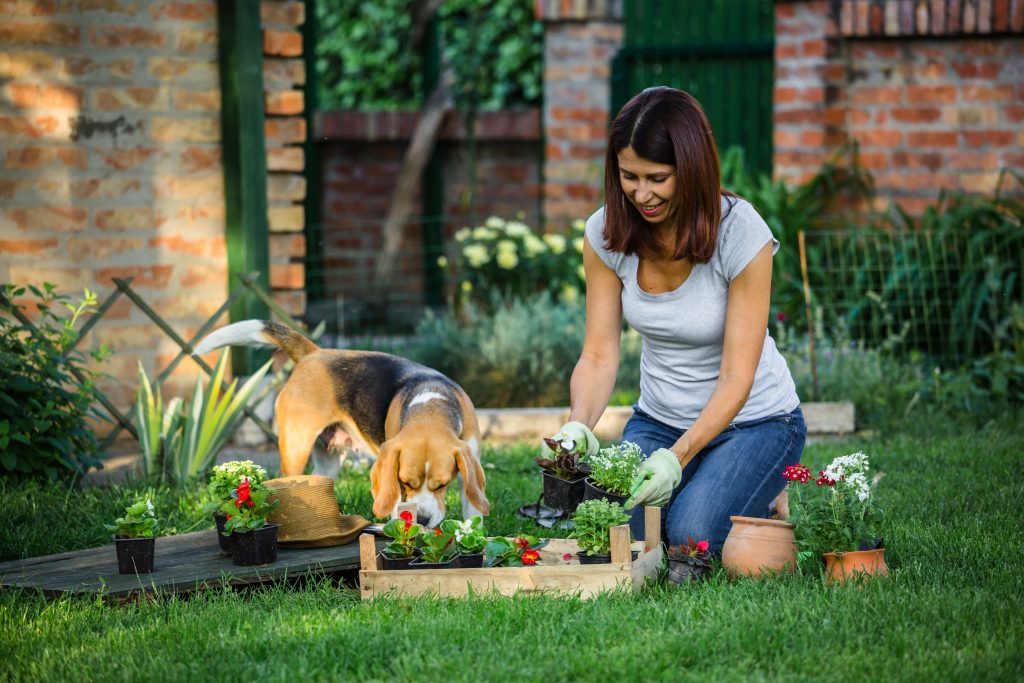Spring is here! Which your precious dog is most likely aware of, given how much time he or she has already spent napping or playing under the sun.
You are probably excited too! This means you can finally start working on that dream garden.
Before you start killing those pesky weeds, though, it might be beneficial to understand the dangers that commercialized weed killers can bring to your pet. Once aware, you can then seek out these alternatives instead.
Here are some ways to use or create pet safe weed killers, which not only kill weeds but also keep your best friend safe and healthy.
Why Commercialized Weed Killers Are Toxic
A problem with commercialized weed killers is they contain massive amounts of chemicals. This makes them toxic to not only pets but also their precious humans. Additionally, it takes about 48 hours for the chemicals to be fully absorbed into the soil. So your beloved four-legged friend has, unknowingly, been rolling in the grass exposing his legs and belly to harsh chemicals.
Worst-case scenario, this can lead to health issues for your dog. In the case that you do notice any health issues with your dog, please contact or take your pet to a vet right away.
Pet-Friendly Weed Killers
There are weed killers on the market that are pet-friendly. Here is a list and a guide of pet safe weed killers that can be found online or in stores.
What makes these different is they do not contain high amounts of toxic chemicals; rather their ingredients focus on being eco-friendly and pet-safe while maintaining the same effect (in terms of killing weeds) as conventional weed killers.

Homemade Weed Killers
If you would rather go the homemade route, there is good news for you! A few household items are not only capable of acting as pet safe weed killers but also will get the job done.
Boiling Water
Boiling water is a cheap and an easily – accessible alternative. It is best used for areas, like the driveway and sidewalk, where there are weeds but little to no plants. The reason for this is boiling water will not only kill weeds but will also kill your plants.
If you do decide to use boiling water, make sure to dress properly. Long pants, long-sleeved shirts, closed-toed shoes and heavy-duty gloves are the safest way to go. This way you will not run the risk of accidentally burning your skin with extremely hot water.
Vinegar
Vinegar, though noted as a pet safe weed killer, does require a bit more persistence. Simple vinegar, found in households, holds up to 5% acidity. So you will either have to continuously spray your weeds, in large amounts, for a few days or you can try to use vinegar with a high-acidic rate (10% to 20%).
Even so, you might not get the results you were truly hoping for.
Vinegar, when used by it self, willonly kill the surface of weeds. It is not able to get to the roots. Therefore, the regrowth of weeds will most likely occur over time.
A more effective way to use vinegar, according to Debt Free Spending, is combining a mixture of vinegar, salt and dish soap and spraying it directly onto the weeds.
Salt
If you are looking to get rid of pesky weeds in the driveway, without having to use harsh chemicals, table salt is a great way to go! It is safe. It is easy to buy. It is pet-friendly (and people-friendly, too).
Salt is best used for driveways, walkways or any areas where your main intention is to primarily get rid of weeds.
If you are looking to grow a garden, be cautious of using salt. Salt, on its own, will kill the weeds but it will also make the soil unsuitable for future plant growth. A safer method is to dilute the salt by mixing it with either water or vinegar.
Manual Labor
Pulling weeds by hand might be the number one pet safe weed killer and the most effective. Yet, it is not the easiest as it can be time-consuming and strenuous work.
Some tips that may help include using a garden fork or other digging tools. Depending on if the root is shallow or deep, different tools will work best for different weeds. Also, damp soil makes it easier to pull weeds. So, take advantage of the next day after a night of rainfall or prepare soil by hosing down an area and letting the water soak in overnight.
Pulling weeds by hand might be a better option for smaller yards or an area without too many weeds.
Conclusion
There are many ways to keep your backyard free from unwanted weeds this spring while also keeping your pet healthy, safe and away from toxins. We hope you take these alternate methods into consideration. If you do have any questions or concerns, give us a call or send us an email!







